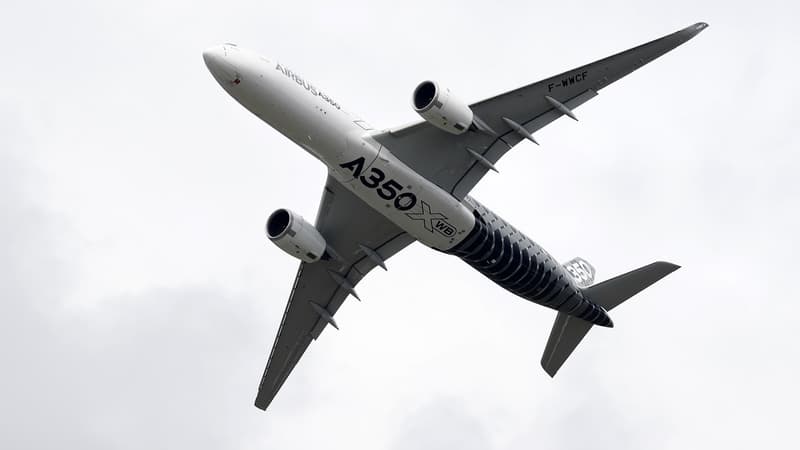After two years of conflict, Airbus announced on Wednesday that it had reached an amicable agreement with Qatar Airways over the A350 paint problems reported by the airline.
“A repair project is now underway and both parties hope that these aircraft will be able to fly safely again. The details of the agreement are confidential and the parties will now proceed to withdraw their legal claims.”
“A Repair Project in Progress”
“The conciliation agreement is not an acknowledgment of responsibility for either party,” insists the aircraft manufacturer.
The two groups were embroiled in a legal battle in this case in which the Doha airline invokes a safety issue while Airbus only acknowledges a cosmetic issue.
Let’s remember that it all started in June 2020 when Qatar Airways announced the immobilization of 23 A350 of its fleet required by the country’s regulator. She says he has observed “cracks, some severe, particularly around windows, exposure of lightning protection, and damage to lightning protection.”
Qatar Airways maintained that this problem could cause a fire in the fuel tanks. Conclusion, flight safety is compromised. Very quickly, the aircraft manufacturer confirmed this wear, which could reveal a metal mesh integrated into the fuselage made of composite materials, but stressed that it was a “cosmetic” problem.
A confirmed explanation last June by EASAEurope’s top aviation regulator, which said it found no evidence that paint or surface erosion on aircraft posed a safety concern.
“We inspected the aircraft. We did not see any damage that could imply safety concerns,” said Patrick Ky, executive director of the European Aviation Safety Agency (EASA).
However, in December 2022, Qatar Airways announces that it will attack its supplier in the British courts, an action that will therefore be extinguished. He then demands $200,000 in compensation per plane and per day of immobilization, or about $2.5 billion at this stage. A few days later, in response to this announcement, Airbus cancel a contract apart for the delivery of 50 A321neos.
end of januaryAirbus confirmed in Reuters which has used a new type of perforated copper foil (PCF) in the fuselage of these long-haul aircraft since late last year. This sheet is placed between the paint and the carbon fuselage to ensure the strength of the fuselage in the event of a lightning strike. “PCF is used in the rear parts of aircraft delivered from the end of 2022,” an Airbus spokesperson said.
Although Airbus acknowledges that this modification of the equipment used should solve the problem of peeling paint from the fuselage, it still considers that its old technical approach does not pose a safety problem.
Source: BFM TV


